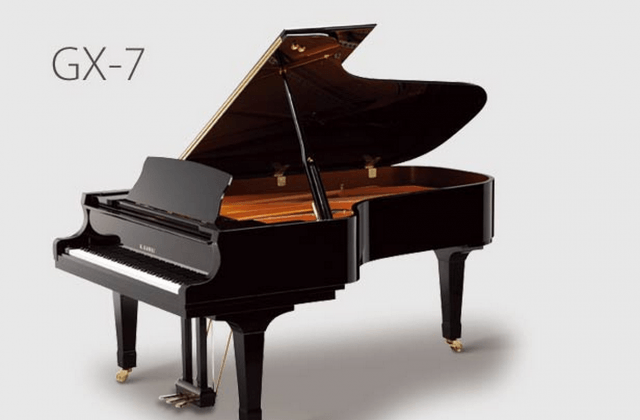
Kawai pianos were first made over 80 years ago in a small workshop in Hamamatsu, Japan. Today, the essence of the master piano builder lives on through a wide range of grand pianos, upright pianos and digital pianos. The scarcity of the specific materials used to create one of these fine instruments make it truly rare – less than 20 pianos are produced each year for worldwide distribution with sales of over $1 billion annually.
The founding father of Kawai Pianos was Koichi Kawai who was mechanically oriented and created the signature action of the piano that bears his name. When he died in 1955, he left the company to his son, Shigeru Kawai who wanted to combine technology and craftsmanship to drive the company forward within the classical and concert music scene.
The most expensive Kawai piano is the orchestra grand piano that measures 7’ which sells for $209,995. This is typically not an instrument an individual would buy for their home, but more a piano that could be purchased for a symphony, concert hall or music school for performance purposes, however I’m sure some lucky people out there do have one for their home.
Kawai is an innovative manufacturer of pianos and one such invention was the use of Styran plastic to produce the action parts of the piano. This is a great departure from the traditional use of wood for the action parts, but scientific testing has proven that this material does not swell or shrink based on ambient humidity and are stronger so breakage is quite rare. Some parts are even strengthened with carbon to be stronger but take up less mass within the piano. This in turn allows the player of the piano to have a quicker reaction on the keys and allows for faster repetition. It took many years for those in the industry to realize that this new, plastic and carbon action was not inferior to wood.
Kawai manufactures three types of grand pianos: GX, GE, and GM. The BLAK series of the GM piano is the most expensive and has the best features offered. The ebony polished models of the BLAK series receive a UV – cured, scratch resistant coating to ensure a lifetime of beauty.
Many experts believe that the sound from the grand series is not ideal for classical music as some other high end pianos such as Steinway but others feel that the touch and “voice” of the piano is comparable or superior to other pianos in the same price structure. As with most instruments, it is a matter of taste, style and preference.
The top end Kawai grand pianos are all hand made in an extreme sense. The soundboard is made of spruce and is air dried for many years. Then it is hand planed and is constantly “knocked” on to listen for the optimum tonal qualities that will go into the final product. The strings are hand wound and the hammers and hammer weights are hand pressed and calibrated. This level of detail is rarely found in piano manufacturers and is one of the many ways that sets Kawai apart from its competitors.
When you buy one of these pianos, you can expect a personal visit within the first year by a master technician from the factory in Japan to ensure your complete satisfaction with the instrument. The level of detail and concern for the overall tonal qualities are what make this piano specifically in demand by pianists participating in international competitions.
Kawai has several “featured artists” that exclusively play the Kawai piano. Some of them are:
- Muse: an alternative rock band from England
- Steven Curtis Chapman: considered to be the top artist in the Contemporary Christian Music scene
- OneRepublic: a Grammy Award nominated pop rock band from Colorado
- Jason D. Williams: legendary rockabilly pianist with country and rock ‘n roll
- Scars on 45: soft rock quintet from Leeds
- Isha Love: a graduate of the famous Berklee College of Music and gospel musician
There are many additional musicians that call the Kawai “their” piano and they come from across all spectrums of music. Since the company’s inception, Kawai has built over 2.4 million pianos worldwide and has become a top choice among leading music venues, educational institutions and international piano competitions.
Photo from Kawai
